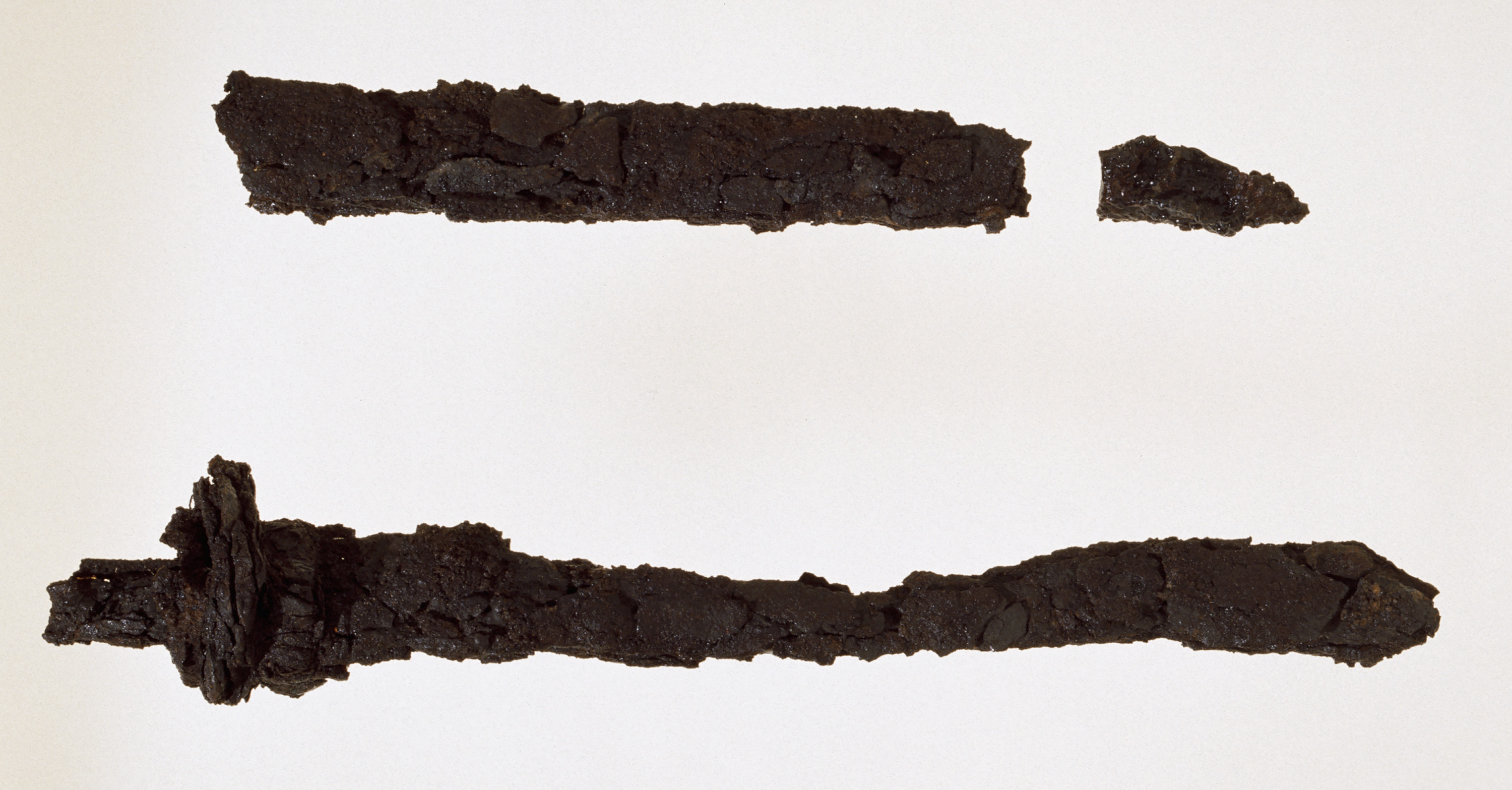- TOP
- Swords
Overview
Swords
- Museum No.
- JK253-22
Showing 1-6 of 1
| Title | Swords |
|---|---|
| Designation | |
| Artist | |
| Category | Archaeology(J), Wepons and Armor |
| Country | Japan |
| Period | Kofun (Tumulus) |
| Century | 6th |
| Year | |
| Quantity | |
| Materials | |
| Dimensions | |
| Inscription by | |
| Signature/Seals Etc | |
| Donor |
Included Works
 Excavated Artifacts
Excavated Artifacts
JK253 Mirror with Eight Ornamental Bells
Mirror with Eight Ornamental Bells
JK253-1 Earrings
Earrings
JK253-2 Bells
Bells
JK253-3 Ornamental Plates with Bridle Bits
Ornamental Plates with Bridle Bits
JK253-4 Horse Bits
Horse Bits
JK253-5 Ornamental Plate with Bridle Bit
Ornamental Plate with Bridle Bit
JK253-6 Ornamental Plate with Bridle Bits
Ornamental Plate with Bridle Bits
JK253-7 Harness Pendant
Harness Pendant
JK253-8 Strap Unions
Strap Unions
JK253-9 Horse Trappings
Horse Trappings
JK253-10 Horse Trappings
Horse Trappings
JK253-11 Horse Trappings
Horse Trappings
JK253-12 Horse Trapping
Horse Trapping
JK253-13 Horse Trappings
Horse Trappings
JK253-14 Bridle Bits and Ornamental Plate
Bridle Bits and Ornamental Plate
JK253-15 Metal Working Tool with Rivets
Metal Working Tool with Rivets
JK253-16 Arrowheads
Arrowheads
JK253-17
This object may be one within a set or the title of a set. To see all objects in the set, perform a Category Search by the Museum Number below, entering numerals only before the hyphen.







These artifacts were found in the Benzai Tumulus No. 1, which belongs to the Maki Burial Mounds in Fukuchiyama City, Kyoto Prefecture. This 5-meter tall, 20-meter long, round tumulus has atop its mound a shrine dedicated to the Buddhist deity Benzaiten (Skt., Saravati). The east side of a stone chamber was excavated by chance in 1955 (Shôwa 30) and artifacts were removed from within. The chamber was of relatively large size at 5.5 meters in length, 1.8 meters in width, and 2 meters in height. Because it was not an official archeological excavation, the exact position of these artifacts when excavated is unclear. They include a mirror with eight ornamental bells, gilt bronze bells, bridle bits, a harness pendant, horse trappings, weapons such as swords, spears, and arrowheads, and sueki ("underglazed earthenware") stem dishes and long-necked jars. Four sets of bridle bits are particularly valuable. The tumulus was constructed around the late 6th or early 7th century, i.e., in the late Kofun period (ca. 250-ca. 600).
Japan-Kofun (Tumulus)